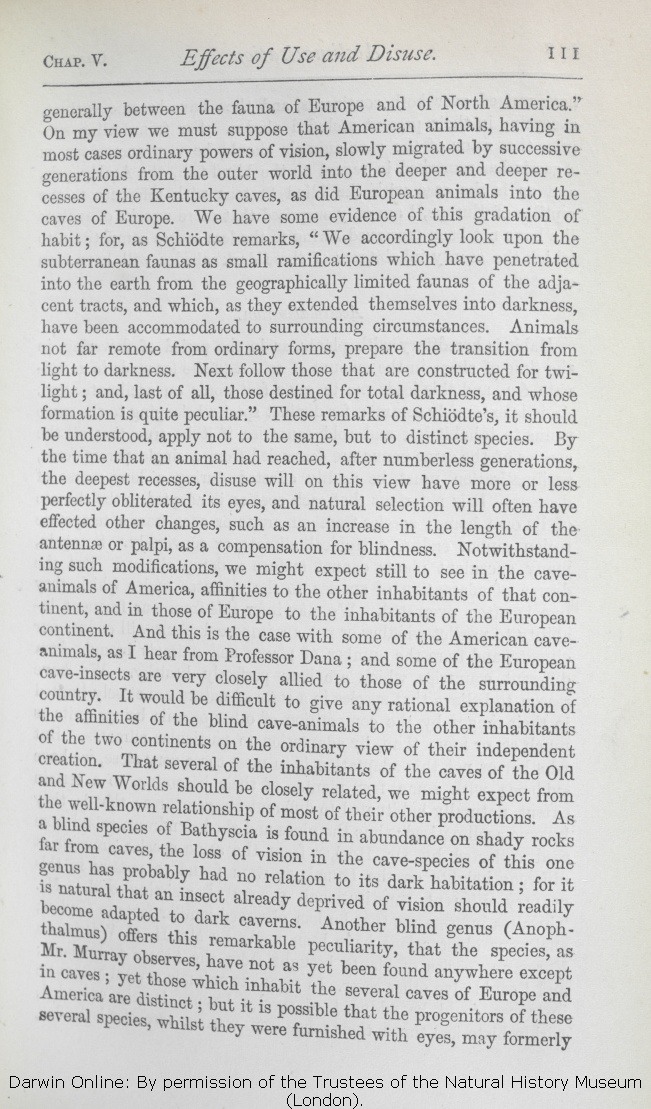generally between the fauna of Europe and of North America." On my view we must suppose that American animals, having
in most cases ordinary | in most cases ordinary 1861 1866 1869 1872 |
| ordinary 1859 1860 |
| "We accordingly look upon the subterranean faunas as small ramifications which have penetrated into the earth from the geographically limited faunas of the adjacent tracts, and which, as they extended themselves into darkness, have been accommodated to surrounding circumstances. Animals 1861 1866 1869 1872 |
| "animals 1859 1860 |
| darkness, and whose formation is quite peculiar." 1861 1866 1869 1872 |
| darkness." 1859 1860 |
| Schiödte's, 1866 1872 | | Schiödte's 1861 | | Schiödtes, 1869 |
| it should be understood, 1866 1869 1872 |
| of course 1861 |
| Europe 1866 1869 1872 | | Europe, 1859 1860 1861 |
| ..... 1872 | | most 1859 1860 1861 1866 1869 |
| far from 1866 1869 1872 |
| out of the 1861 |
| of this one genus has 1866 1869 1872 |
| has 1861 |
| for 1872 | | and 1861 1866 1869 |
| ..... 1872 | | very 1861 1866 1869 |
| peculiarity, 1872 | | peculiarity: 1861 1866 1869 |
| that the 1872 |
| the several distinct 1861 1866 1869 |
| observes, have not as yet been 1872 |
| has remarked, inhabit several distinct European caves and likewise those of Kentucky, and the genus is 1861 1866 1869 |
| anywhere 1872 | | nowhere 1861 1866 1869 |
| caves, 1872 | | caves; 1861 1866 1869 |
| yet those which inhabit the several caves of Europe and America are distinct; but 1872 |
| but 1861 1866 1869 |
| progenitors 1872 | | progenitor 1861 1866 1869 |
| ..... 1872 | | or progenitors 1861 1866 1869 |
| species, 1866 1869 1872 | | species 1861 |
| whilst they were furnished with eyes, may formerly 1872 |
| may formerly 1861 |
| whilst furnished with eyes, formerly may 1866 1869 |
| ..... 1872 | | widely 1861 1866 1869 |
|









